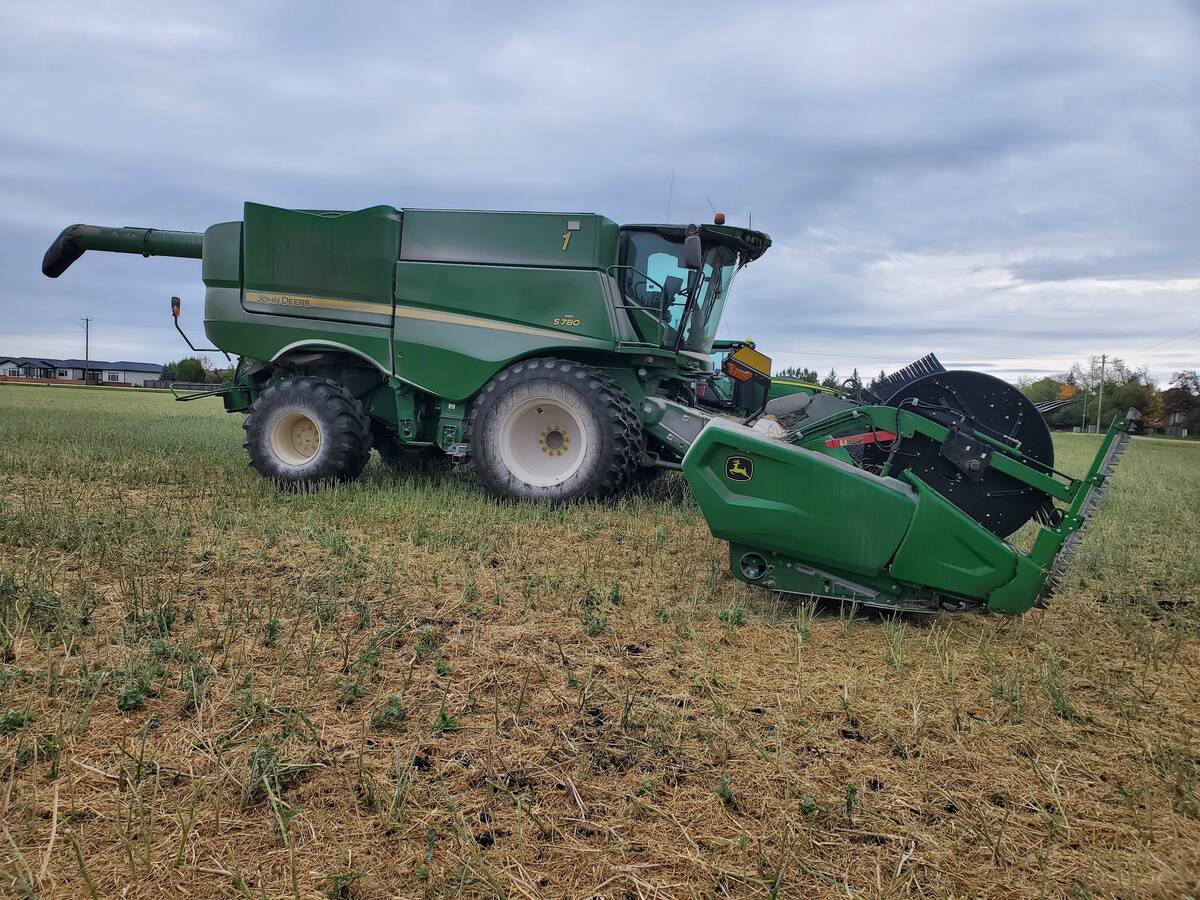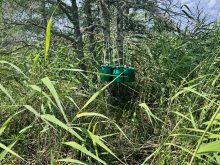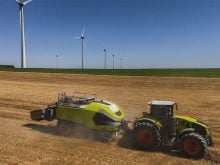ROUND HILL, Alta. – As Harvey Nahirniak gives a tour of his farm in the Round Hill, Alta., area on a drizzly spring day, his rubber boots sink into the mud. He knows the soil here isn’t yet ready to seed.
A calf, with little more than the tips of its ears exposed, seeks shelter from the cool afternoon in a stash of straw just outside a corral. The horses still have traces of their winter coats and Harvey’s Case 4690 tractor stands quietly. It had a brief foray in the fields, but is idle again after spring showers and snow put a stop to field work.
Read Also

Powdery mildew can be combine fire risk
Dust from powdery mildew can cause fires in combines.
But Harvey has been around. He has farmed all his life so is not one to go off half-cocked at the first minor setback.
He welcomes the rain and speaks of the pastures greening up for the family’s 100-head cow/calf operation.
“I’m thinking about (seeding) but I’m not anxious because the ground is cold and not ready yet. When it’s ready to go it will get done.”
After the dry conditions last year, his wife Marjorie also welcomes the rain. She calls it “a good omen.”
Harvey and his brother, Tom, seed about 1,700 acres every year. About half of that is devoted to feed grain for the cattle operation. Most of the other acres will probably be canola, wheat and oats.
Land around his farm is variable and canola typically yields about 20 bushels per acre. Malting barley usually isn’t a good bet, said Harvey, who is counting on solid cattle prices to balance out grain this year.
“I think that’s why we’re still farming,” said Marjorie, speaking of their financially balanced mixed farm.
Suited to land
Sloughs dot their land, so much of it is unsuitable for grain.
“Our cows are on land that you can’t farm, plain and simple. Besides, I kind of like the cows,” Harvey said.
The Nahirniaks’ three sons enjoy the cattle too. Although 15-year-old Tyler thinks cows demand a lot of work as he talks about squeezing in quality time to catch televised hockey playoffs, he values the cash he and his brothers earn from the four cows they share. But he remains a skeptic about his chances of staying on the farm after he’s finished school.
“There have to be easier ways to make money.”
His 17-year-old brother Kyle remembers working with calves since he was about seven years old when he would help with the gates.
The farming lifestyle still sits well with Kyle, who finds time to play basketball and golf, but likes the freedom and responsibility of the farm. The work is “really no problem,” he said, adding he likes cattle and considers farming an option for later life.
Eighteen-year-old Cody is taking college agriculture classes, said Marjorie, adding she expects all three of their boys to get post-secondary training.
“We raised them telling them that they have to get an education and then they can come home and farm after.”
She works casual hours as a registered nurse to save money for the boys’ education.
If any of the boys decides to return home to farm, the Nahirniaks will have to expand their cattle herd, said Harvey. As it is, “they’re sneaking in a few more every year” and use a community pasture for extra grazing space.
Marjorie and Harvey admit farming isn’t a life of luxury. But, as the family sits at the kitchen table with apple juice and chocolate chip cookies, it’s clear they relish the lifestyle.
“We’ll probably farm until the day we die,” said Marjorie.
Even if they win the lottery – so far they’ve only gleaned about $30 in two years – they will not leave the farm, said Harvey. Instead they would use the winnings to buy plenty of new equipment and pay off debts.
“I don’t think it could get much better than that,” he said.
















